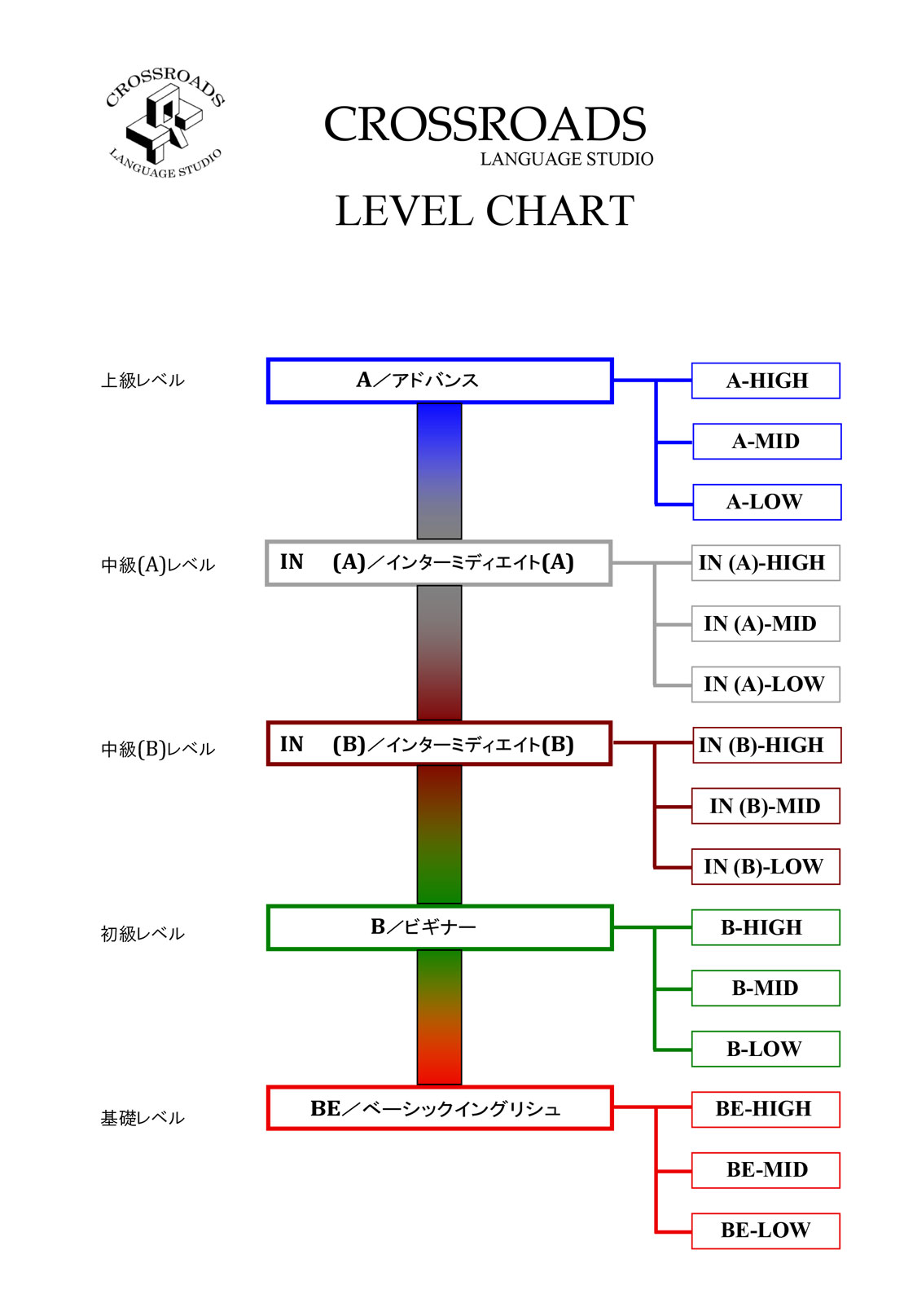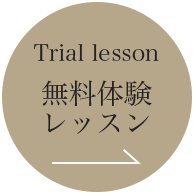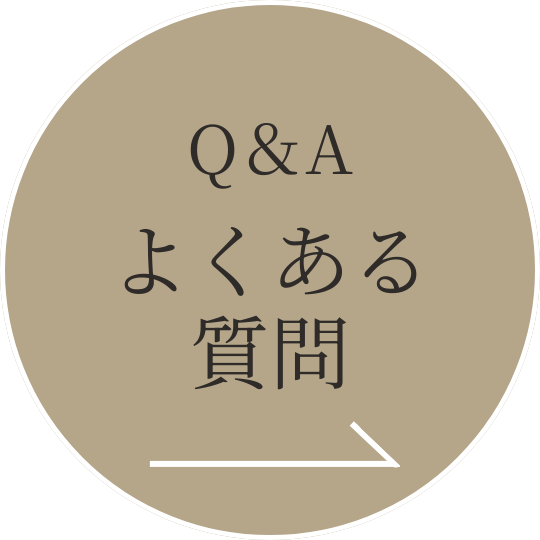
Method (メソッド)
あなたは母国語をどのようにして学びましたか?幼児期に、両親がベッドの前に机とメモ帳と文法のテキストを置いて、文法のルールと単語リストを暗記するよう言ったのでしょうか?学期終了時には、日本語のレベル査定テストを受けましたか?母国語が話せるようになり、コミュニケーションが取れるようになる前に、このようなことは起こりましたか?
もちろん、こんな愚問の答えは「NO」です。しかし、では、どのようにして言語力を身につけることができたのでしょうか?
実は、人は皆、実際にあらゆる言語でコミュニケーションできる先天的能力を備えて生まれてきます!出生時の脳神経回路は、その子が生まれた地域が何処であっても、その地で話されるどの言語にも対応できるよう、すでに「接合」された状態になっています。何が「正しく」、何が正しくない使い方かは、環境(両親や教師など)からの反応に基づき、促されながら試行錯誤を繰り返しで決定されて行きます。
このようにして、子どもたちは、外界を最も効果的に説明する言語と、自分の言いたいことを外界に伝える方法を「学習」して行くことになるのです。その過程において、「正しい」言語構造(文法)が強化され、その他の言語に適用する構造は、使えなくなる時点まで弱まり、最終的には捨てられてしまうことになります。つまり、母国語を学ぶということは、事実上、他のすべての言語を学ばないということになります!しかし、「捨てられた」言語構造の「ゴースト(幻影)」は、複雑な脳神経ネットワークの何処かに、今までどおり存在しており、正しいトレーニングによって、生涯どの段階でも「復活」させることは可能だと言うことを認識することが重要になります。
とは言え、大人は、幼児ではなく、子供が母国語を吸収し、処理し、最終的に使えるようになる、制約の無い「自由な精神的高速路」を持っていないのも事実です。大人になる道程で、第二言語の習得を妨げる障壁が年を重ねるに従って発生してしまいます。その一つは、皮肉にも、日本の学校における文法/テスト方式の英語教育です。このアプローチでは、英語の仕組みについての講義(ほとんど日本語だけで行われる)に焦点が置かれています。英語の使い方についての学習はありません。第一言語、母国語の習得は、その言語を話し始める前に文法のルールを勉強することで、成し遂げられるのではありません。使える第二言語の習得も同様です。
そこで、先ず認識すべきは、学校で習った勉強法は、使える第二外国語を身につけるには、あまり役立たないと言うことです。第二言語を話せるようになることが目的の場合、数学や科学、歴史などの教科を勉強するように、目標(第二)言語について、文法の規則や情報/事実などの蓄積勉強に着手しても、あまり役立ちません。つまり、従来の方法では、言語の「習得」はできないということです。言語は自然に、根本的に習得されるものです。それが、子供が母国語を習得する過程であるように、大人の第二言語習得にも、同様に適応する過程なのです。
レベル別上達度:
Crossroadsでは、標準的なテキストを使うことはほとんどありません。(Beginner/Sub-Beginner level)初級/準初級レベルの方は、先ず「英語で考える」方法を学び始めます。この初歩プログラムでは、テーマ別に編成されたA/B対話カードの他、小トレーニングテキストを使用します。プログラムは英語習得の旅の始まりから、自然な応答力が伸び、身につくよう設計されています。このアプローチで、私たちは、何年も前に「捨てられた」(英語の)言語構造を掘り起すことに挑みます。プロセスは、スポーツ選手やダンサーの日々のトレーニングパターンや、音楽家の音階練習に例えることができます。この方法でトレーニングすることで、予想に反し、英語の使い方について「考える」ことが無くなり、「自然に」英語を使うようになります。
しかしながら、Crossroadsは、クラスの「主導権」をできるだけ早く、できるだけ多く、受講者に引き継いでもらいたいと考えています。そこで、初期の「英語で考える」トレーニングを経て、 (High Beginner/Lower Intermediate) 初級(高)/中級(低)に上がったレベルでは、レッスンでの焦点が、受講者に移行し始めます!「直接(自己)体験は、最良の教師」と言われるように、この時点で、受講者個人の逸話や興味深いトピックなど、フリートークの要素がレッスンに導入されるようになります。インストラクターは受講者の話し方や言いたいことに、常に焦点を置き、訂正を示し、同時にまた適切な単語力向上のためのサポートを惜しみません。
他者を英語で、納得させるコミュニケーション力の習得においては、クラスで使う対話カードの場合も、或いは受講者自作の文章の場合にも、Crossroadsが開発し、長年導入してきた多くの「ドラマテクニック」の手法が用いられます。この手法は、通常中級レベルの「ロールプレイ」に引用されています。
どんな言語であっても、言葉だけではすべての意味合いを十分に表現できないことに、着目しなければなりません。ニュアンス、フィーリング、感情、そして第二言語の場合は、文化的背景も考慮する必要があります。「ドラマのテクニック」は、これら全ての観点を網羅すると同時にそれ以上のものを抱合しています。
(Beginner to Intermediate and Advanced)初級から中級、上級に至るまで、全レベルにおいて重要になるプログラムの構成要素は、受講者自身がオリジナル文章を書くことです。これは、初期のカード練習における対話形式のオリジナル文章、「延長対話文」に始まり、レベルが上がるにつれて、受講者発案の対話文、完全チームプロジェクトへと発展して行きます。Crossroadsの上級者は、短編小説を書き上げるまでになります!上記のように、私たちは、標準的なテキストを良しとせず、受講者自身が独自のテキスト書くよう求めています。
言語を習得すると言うことは、コミュニケーションを通じた体験、つまり口頭によるコミュニケーション体験の積み重ねであるということを決して忘れてはなりません。これが受講者が取り組む全てのプロジェクトの根幹を成しています。クラスでは、自分の考えを先ず話し、伝え、そしてそれを書き、文章に使う言葉を見定め、さらに巧妙にするには、如何すべきか話し合い、遂に完成します。そして次のプロジェクトが動き始めることになります。
レベルシステム
ここでは、CROSSROADSが用いるレベルシステムの概要と、入校される場合、あなたのレベルの目安となる各レベルの概要を紹介します。

BE –
あなたが入門レベルの場合、日本の通常の学校教育以外で、英語を学ばれたことがない可能性が高いです。
BE – LOW: 英語で話すことはできませんし、口語英語を理解することもできません。このレベルで必要なる能力は、簡単な短文を「読む」時に、書かれている単語を「発音する」能力のみになります。読んでいる内容をほとんど理解できない状態ですが、それでかまわないレベルです。意外かもしれませんが、この段階では英語を理解する必要はありません。
BE –MID:ネイティブの英語を聞いても、大きな「ショック」を受けることはありませんが、まだ話すことには、全く自信がありませんし、ほとんどの場合、話された英語を実際に理解することができません。しかし、英語が全く「異質無縁のもの」だと言う感じは無く、レッスンの始めに、英語で気楽にインストラクターに挨拶することができます。
BE – HIGH:「ピジンイングリッシュ」レベルに近づいています。話される英語をある程度理解し、簡単な質問には単語や短文を発して、応答することができます。最も重要なのことは、たとえ50%またはそれ以下しか理解できなくても、ネイティブイングリッシュスピーカーを前に、ある程度「自然体」の自分で居られるレベルだということです。レベルアップの準備が整ったレベルです。
B –
このレベルでは、少し英語で話すことができます;しかし決して、流暢に、多くの間違いも無く話せるという意味ではありませんし、語彙不足によって、かなり話の流れが止まってしまいます。しかし、初歩的レベルで、(時々)自分を理解してもらうことができます。最大の課題は、口語英語を聞いた時、或いは英語で自己を表現したい時、頭の中で、英語から日本語に(或いは日本語から英語 に)翻訳することを止めることです。
B-LOW:あなたの「英語」はたいへん理解しにくいレベルです! 簡単な考えを表現するために、
2-3の短文を組み合わせることが困難です。話す時には、文法的な間違いが多く、語彙も著しく限られています。また英語でコミュニケーションする際は、まだ日本語から、または日本語に頭の中で翻訳する必要があります。とは言え、(一応)話している状態です!
B – MID:このレベルでは、英語文が、より首尾一貫したものになり、幾つかの短文を道筋だって組み合わせ、関連付けることができるようになります。しかし、間違いは多く、話している時、語彙不足のために、話すのをためらってしまうことが度々あります。英語でコミュニケーションを取ろうとする間、日本語から、または日本語に翻訳してしまうことが、さらに話の流れを阻止してしまうことになります。
B-HIGH: (ブロークンな)イングリッシュで10分から15分、あるいは20分程度、会話を続けることができ、かなり長い時間、混乱してしまうこと無く、聞くことができます。しかしながら、英語で話す際、自分の考えを詳しく話せる程、十分な語彙が無く、未だ多くの文法的な間違いあります。とは言え、この段階で有用な語彙を習得していることが要因となり、少ない英語力でありながらも確かな「自信」を持つようになり、頭の中での日本語からの翻訳に頼ることが少なくなってきます。
In(B) –
具体的な詳細部に取り組む必要があります。このレベルでは、文法的な間違いを正すこと、強力な語彙力の基礎を築くことが主な重点になります。インストラクターはレッスン中、常にこの2点を向上させることに焦点を置いています。このレベルでは、ライティングの宿題がますます重要な役割を果たすようになり、レッスンとレッスン間に出されるリーディングの宿題も同様に重要になります。
In(B)-LOW:簡単な話題、また自分にとって身近なトピックであれば、短い会話を続けることができます。繰り返される文法的間違いの訂正作業と語彙の基礎を広げることに懸命に取り組む必要があります。
In(B)-MID:このレベルでも語彙幅を広げること、文法/構文を正すことに重点が置かれています。また、流暢さと発音を効果的に向上させる方法を真剣に熟視する時期でもあります。
In(B)-HIGH:「サバイバル」レベルの英語力を持っています。完璧には程遠いものの、自分の英語力を頼りに1~2週間程の海外旅行を巧く乗り切ることができます。未だ文法や構文を明確に正して行くこと、語彙幅を広げることが必要ですが、英語の基本的な話し手としての機能を備えています。最も重要なことは、英語でコミュニケーションを取りながら、頭の中で日本語から英語に翻訳することがほとんど無くなってきたことです。
In(A) –
「英語で考える」能力が脳に定着し、もはや翻訳が不要になってきたレベルです。会話能力を備えたレベルです。(部分的に「直感的」に理解するレベルですが)聞いたことのほとんどを理解でき、全般的にかなり気楽に自分を表現することができます。しかし、その英語は、「洗練」された表現力に欠けています。ニュアンス、慣用句、諷論など、まだ把握しきれないところがあります。文法、語彙、発音、流暢さなどの基本的な修練を続けながら、このような英語の微妙な表現を意識し始める時期に来ています。このレベルのプログラムでは、リーディングとライティングの宿題が重要な部分を占めてます。
In(A)-LOW:自由時間を使って、すでに英語のニュース報道や短編小説を読んだり、英語の映画やテレビをオンラインで見たりされますよね(そうでしょう?)。これらのメディアで聞いた英語を理解する優れた感覚を持たれていると思いますが、ネイティブイングリッシュには通常の意味や使い方に反する比喩や口語表現が多く、分かり難いことも多々あると思います。ネイティブレベルの英語はどのように作用するかを学び始める準備が整ったレベルです。
In(A)-MID:基礎的な優れた英語力と共に、「生きた」英語特有の微妙なニュアンス感覚も感じ取れるようになってきました。まだ文法的な間違いはあり、訂正が必要ですが、語彙幅の土台はかなりしっかりしています。これからは、この語彙ベースを使う能力を伸ばすことが必要です。
In(A)-HIGH: 言葉は、一般的な定義よりもさらに多くのことを抱合しています。英語でコミュニケーションを取る際、ネイティブスピーカーは、言葉にニュアンスや微妙な表現、風論の含みを持たせる方法を知っています。このようなバリエーションのいくつかを理解し始めたレベルです。このレベルは、自分の英語の限界を過度に心配すること無く、海外の大学に入学し、勉強することが可能になるレベルです。
A –
上級者のレベルです。つまり、あなたの興味範囲から大きく外れていない限り、英語での会話に限界はありません。全般的な英語レベルであれば、第二言語として英語を話す人に匹敵し、恥をかくこともありません。豊富な語彙幅を持ち、英語がどのように機能するかをよく理解しています。これらは英語に間違いが無いと言う意味ではありません-間違いますし、語彙はこれ以上増やすことができないということでもありません-増やせます。しかし、どのような英語環境でも、自信を持って気楽に活動できることを意味しています。
A-LOW:語彙、語彙、語彙。気負うこと無くリラックスして、英語を使うことに自信がありますが、さらにその幅を広げることができます。また、英語で話したり書いたりする際に、文法の間違いが出てきます。残された文法的な問題を解決し、語彙幅と使用法を広げることが最重要課題です。
A-MID:英語での有能なコミュニケーターです。自信を欠くような状況は少なく、ネイティブスピーカーとの会話も安心してできます。しかし、興味分野の範囲を超えた専門的な語彙を必要とするトピックでは、まだ「当惑してしまう」ことがあります。口語表現、比喩、聞き慣れない慣用句、また英語の「微妙な表現」にも思案してしまい、意味の把握に「直感」が巧く働かないこともあります。しかし、全般的な日常英語であれば、問題はありません。
A-HIGH:まだバイリンガルとは言えませんが、それにかなり近いレベルです。あなたの英語はネイティブレベルより1、2段階劣りますが、その差はほとんど問題になりません。知らない単語や表現を聞いた際には、かなり正確に意味を推測することも学びました。理解できないことはあまりありませんが、これ以上、上達できないということではありません!複雑な宿題や極めて高度な課題は、常に限界を押し上げることを可能にします。Crossroads は、上級者が挑戦できる、このような課題を沢山用意しています。
Method
How did you learn your mother tongue? Did your parents set up a desk, writing pad and grammar textbook in front of your cot when you were an infant and then ask you to start memorizing rules of grammar and lists of vocabulary? Were you tested at the end of a set period of study to determine your level of proficiency? Did any of this happen before you could actually speak, and communicate, in your native tongue?
Of course the answer to these silly questions is NO! But then, how did you acquire your language skills?
In fact, every human being is born with an innate ability to communicate in any and ALL languages! The brain, at birth, is already “wired” to accommodate any language that happens to be in the child’s vicinity. It’s by trial and error that decisions are made about what is “correct” usage and what is not based on, and encouraged by, the reactions the child gets from their environment (i.e. parents, teachers, etc.). In this way, children “learn” the language that most effectively explains the outside world to them and how to communicate what they want to say to that world. In the process, the “correct” language structure (the grammar) is reinforced and other possible structures that might be applicable to other languages are weakened to the point of being unusable and, eventually, are discarded. This means that as we learn our native tongue we are, in effect, unlearning all other languages! But it is also important to realize that the “ghosts” of those “discarded” language structures still exist somewhere in the complexity of the brain’s neural network and, with the correct training, can be “resurrected” at any stage in a person’s lifetime.
That being said, it is also a fact that adults are not babies and do not have the same uninhibited “mental freeway” that enables a child to absorb, process and eventually use their mother tongue. On the road to adulthood, obstacles are created which can inhibit second language acquisition later on in life. One of these obstacles is, ironically, the grammar/test approach to teaching English in Japanese schools. This approach focuses on lectures (almost entirely in the Japanese language) about how English works, but not about how to use English. Native first language acquisition does not evolve by studying the rules of grammar before one starts to speak in that language and neither does the evolution of a useable second language.
So, the first thing to realize is that the study techniques you have been taught to use at school may not be very useful in acquiring a useable second language. Setting out to accumulate information/facts about the target (second) language – the rules of its grammar, etc – as you would when studying subjects like math, science, history, etc, doesn’t help much if your goal is to become a speaker of a second language. In other words, you can’t “learn” a language in the conventional sense. Languages are acquired naturally, organically. It is a process that applies no less to adults acquiring a second language as it does to children acquiring their mother longue.
Progress through the levels:
At Crossroads we very rarely use a standard textbook. If you are at the beginner/sub-beginner level you’ll first begin to learn how to “think in English”. This starter program uses a small training book, along with themed A and B dialogue cards. The program is designed to help you develop natural responses at the start of your English journey. Using this approach, we’re trying to dig up that “discarded” language structure (English) you buried so many years ago. The process can be likened to an athlete’s or dancer’s training routine, or to a musician practicing their scales. By training in this way, you’ll begin to use English “naturally” without, ironically, “thinking” about using English.
But at Crossroads we want our students to “take over” in the classroom as much as, and as soon as, possible. So, after you’ve passed the initial period of training to “think in English”, you’ll move up to the High Beginner/Lower Intermediate levels where the focus of the lesson begins to shift to you! “Direct experience is the best teacher” and at this point, we introduce elements of free conversation in your lessons – your personal anecdotes and other topics of interest. All the while your instructor will focus on how you speak and on what you want to say, offering corrections and assistance in developing appropriate vocabulary.
When it comes to learning how to convincingly communicate in English, the dialogues we use in class, either from cards or in the form of our student’s original writing, are approached using many of the “drama techniques” Crossroads has developed and used for many years. At the Intermediate levels, this is generally referred to as “role play”. It has to be noted that in any language, words alone do not adequately express full meaning. There are nuances, feelings, emotions and, in the case of a second language, the cultural context to consider. Our “drama techniques” cover all of these issues and much more.
An important component of our program at all levels, Beginner to Intermediate and Advanced, is writing – your own original writing. This starts out in dialogue form as “extensions” of the early card work and develops into full team-project, student-inspired dialogues as the levels go up. Our Advanced students have even written complete short stories! As mentioned above, we don’t like standard textbooks, instead, we ask our students to write their own textbook!
It should never be forgotten that learning a language is an experience in communication – verbal communication – and this is at the center of all the projects our students undertake – we talk/communicate ideas first, then write them down, then we look at the language used in this writing and discuss how to improve on it. Finally, it’s signed off as completed and the next project is set in motion.
Level System
Here is an overview of the levels system we use at CROSSROADS and an indication of where you might fit in, should you choose to join us:

BE –
If you are at this entry level, you will most likely never have studied English outside of the usual school system in Japan.
BE – LOW:You cannot speak in English, nor can you understand spoken English. The only skill you’ll need at this level is the ability to “sound out” written words as you “read” simple, short texts. You will most likely not even be able to understand most of what you are “reading”, but this is OK. Surprisingly, you don’t need to understand at this stage!
BE –MID:You’re not totally “shocked” at hearing native English but you still can’t speak with any confidence, nor, for the most part, can you really understand spoken English. But English doesn’t seem totally “foreign” to you and you are comfortable greeting your instructor in English at the start of each lesson.
BE – HIGH:You’re getting close to the “pidgin English” level. You have some understanding of spoken English and can utter a few one-word or short sentence responses to simple questions. Most importantly, your confidence is at a level where you feel, to some extent, “natural” being around native English speakers, even if you only understand about 50%, or less, of what is being said. You’re ready to move up a level.
B –
At this level, you’re able to speak a little in English; not, by any means, fluently or without many mistakes, and you’ll be significantly held back by a lack of vocabulary. But, at a rudimentary level, you are able to make yourself understood (sometimes). Your biggest challenge is to learn to stop mentally translating English to Japanese when you hear spoken English (or when you want to express yourself in English).
B-LOW:Your “English” is very hard to understand! You have difficulty putting a couple of short sentences together in order to express a simple idea. You make a lot of grammatical mistakes when you speak, and your vocabulary is severely limited. And, you still need to mentally translate from, or to, Japanese when you’re trying to communicate in English. Nevertheless, you’re talking! (Sort of)
B – MID:At this level your English is becoming more coherent and you are able to sensibly string together a couple of short sentences. You make many mistakes and you hesitate when you’re trying to speak, often due to a lack of vocabulary. Attempting to mentally translate from, or to, Japanese while you try to communicate in English is also holding you back.
B-HIGH:You are able to carry a conversation in (broken) English for about 10 to 15, even 20 minutes, and you can listen for fairly long periods without being totally confused. Nevertheless, you lack sufficient vocabulary to elaborate on your ideas, and you still make many grammatical mistakes when you speak in English. But, you have a certain “confidence” using the little English you do have and you rely less on mentally translating from Japanese – mostly because you have acquired some useful vocabulary at this stage.
In(B) –
You need to start working on the specifics. At this level, the emphases will mostly be on correcting grammatical mistakes and building up a strong vocabulary base. Your instructor will focus on improving these two areas at all times throughout your lessons. Writing assignments have an increasingly important role to play at this level, as do between classes reading assignments.
In(B)-LOW:You can carry a short conversation so long as the subject is simple and the topic is somewhat familiar to you. You need to work on correcting recurring grammatical mistakes and developing your vocabulary base in earnest.
In(B)-MID:The emphases remain on vocab expansion and getting the grammar/syntax right. It is also time to seriously look at ways to effectively improve fluency and pronunciation.
In(B)-HIGH:You have “survival” level English. Far from being perfect, nevertheless you can still rely on your English to survive a week or two overseas touring in a foreign country. You still need to straighten out you grammar/syntax and expand your vocabulary base, but you are functioning as a basic speaker of English. Most importantly, you have all but stopped mentally translating from Japanese while you are communicating in English.
In(A) –
The ability to “think in English” has taken root in your brain and you no longer need to translate. You are at the conversational level. You can understand most of what you hear (even if it is partially at an “intuitive” level) and you can generally express yourself fairly comfortably. But there isn’t much “sophistication” to your English – nuances, idioms, insinuations, etc may still evade you. It will be time to start working these subtleties into your awareness of English, while continuing to work on all the basics: grammar, vocabulary, pronunciation, fluency, etc. Reading and writing assignment will be an important part of this level’s program.
In(A)-LOW:You already spend some of your free-time reading English news reports, short stories and you watch English movies and TV on line (right?). Although you have a good “sense” of the English in these media, much of it is confusing because “native” English is full of metaphors and other colloquial expressions that defy conventional definitions. You are ready to start working on your understanding of how English actually works at a “native” level.
In(A)-MID:Along with a good grounding in basic English, you are also starting to get a “sense” of some of the subtleties inherent in “living” English. You are still making grammatical mistakes that need correcting, but your vocabulary base is quite solid. It’s now necessary to expand your usage of this base.
In(A)-HIGH:Words have more than common definitions. Native speakers know how to add nuances, subtleties and insinuations when communicating in English. You are now beginning to understand some of these variations. At this level it would be possible for you to enter, and study in, a foreign university without being unduly bothered with language limitations.
A –
You’re an advanced student. This means you have no limitations in carrying a conversation in English as long as the subject is not too far out of your range of interests. At a general English level, you can match any other speaker of English as a second language and not embarrass yourself. You have an extensive vocabulary base and a good grasp of how English works. This is not to say that you don’t make any mistakes – you do – and that your vocabulary can’t be extended any further – it can. But you can operate comfortably in any English speaking environment with confidence.
A-LOW:Vocabulary, vocabulary, vocabulary. You are confident and relaxed using English, but you can still improve your range. And mistakes in grammar continue to crop up when you speak or write in English. Your primary concern should be on straightening out the remaining grammar issues and expanding your range and usage of vocabulary.
A-MID:You are quite a competent communicator in English. Not much would challenge your confidence and you feel at ease talking with native speakers. However, you still get “thrown” when the topic requires specialist vocabulary outside of your field of interest. Colloquialisms, metaphors, unfamiliar idioms and other “subtleties” of the English language also force you to pause, and your “instinct” for meaning doesn’t quite get you through. But for general, everyday English, you are untroubled.
A-HIGH:You’re not quite bi-lingual yet, but pretty close to it. Your English is a notch or two below native level, but the difference hardly matters. You have learnt to extrapolate meaning fairly accurately when you hear an unfamiliar word or expression. Not much escapes you, but that is not to say that you can’t improve! Complicated assignments and sophisticated projects will always push the limits, and we have plenty of these at Crossroads waiting for our advanced students to challenge.





